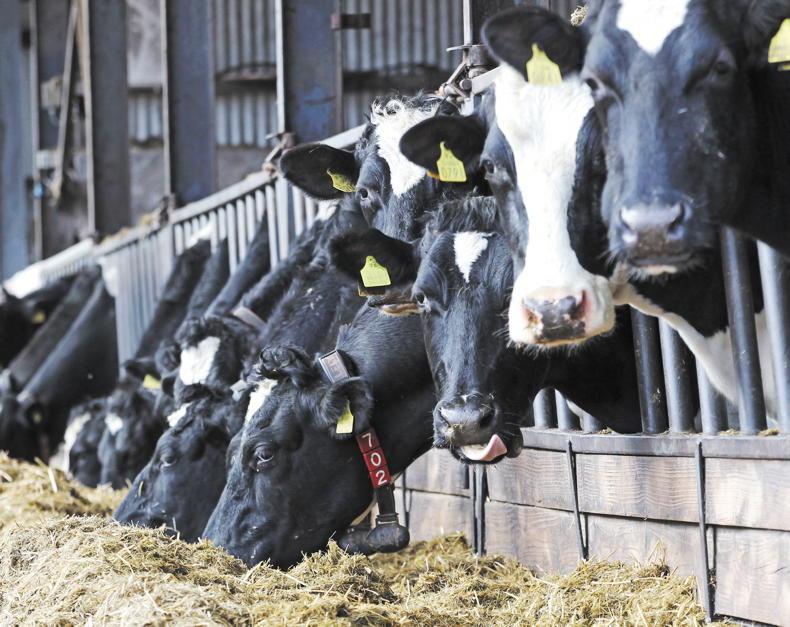Lack of labour has been a huge challenge in recent years, and to make matters worse, a further crisis is looming on many of the country’s dairy farms due to an expected shortage of skilled labour next spring. One job that can be moved away from the busy spring is vaccination for IBR and Lepto.
Traditionally many vaccination protocols for breeding animals are concentrated around February and March, which is the busiest time of year for farmers with cows to be calved, calves to be fed and the milking routine still not completely bedded in due to daily introductions of freshly calved cows and heifers. The spring is therefore an inconvenient time for the farmer to vaccinate the herd and it is not ideal for the cow either as vaccination in early lactation is unlikely to produce an optimal immune response due to metabolic stress².
Vaccination protocols
Moving vaccination protocols to the winter can be done simply and efficiently and does not require additional injections.
For example, a farmer traditionally vaccinating heifers for lepto in February and March, could start the process slightly earlier in December, if using Spirovac® The same can be done for IBR vaccination with the Rispoval® Yearly IBR Programme. Animals that have not previously been vaccinated for IBR need to receive a single dose of Rispoval IBR-Marker live into the muscle followed within 6 months with Rispoval IBR-Marker inactivated under the skin. Once the herd is on the system it is very easy to operate as all animals (weanlings, heifers, cows and the bull) receive an annual dose of Rispoval IBR-Marker inactivated under the skin in December and the calves just need to get a single injection of Rispoval IBR-Marker live into the muscle in July or August, when they will all be over 3 months of age and before they are housed. The additional advantage of using the Rispoval Yearly IBR Programme is that the combination of a live with an inactivated vaccine results in a more complete immune response and therefore better protection lasting 12 months from a single booster. Live IBR vaccines Live IBR vaccines are best used in naïve animals (e.g. calves over 3 months of age) to protect them from clinical disease. Live vaccines work rapidly and stimulate immunity most similar to natural infection. Studies have found that live vaccines are better at protecting naïve animals from clinical disease compared to inactivated ones3. Inactivated IBR vaccines are best used in latently infected animals (e.g. adult dairy cows) to stop or reduce viral shedding. Inactivated vaccines stimulate immunity in a slightly different way to the live vaccines and have been found to be better at reducing viral shedding in animals which have previously been infected and are carrying the virus (latently infected animals)4. In a dairy herd with a high bulk milk antibody level, which suggests that a high proportion of the milking cows are already infected, use of an inactivated vaccine can better help to reduce the amount of virus these cows shed when under stress. This reduces the risk to any uninfected animals, or heifers entering the herd. So now is the time for farmers to plan to reduce the workload in the busy spring and introduce some labour-saving solutions to make life easier and more effective for both man and beast. The traditional springtime is not ideal for either the freshly calved cow or for the hard-pressed farmer. Both Spirovac and the Rispoval Yearly IBR Programme offer 12 months’ protection without any seasonal restrictions. These vaccines could be used during the winter after cows have been dried off. December is a quieter time on the farm, because although cows still need to be fed, milking has stopped and there are no new-born calves nor fresh cows to worry about. At this time the cows are also healthy and in metabolic stability and their body condition is frequently improving, so an optimal vaccination response can be expected. References 1. CSO Oct 2021 2. Corbett R (2013) Preserve and protect transition cow immunity. Dairy Cattle Reproduction Council Newsletter July 1, 2013, vol 8 issue 3 3. Bosch, J.C., M.J. Kaashoek, A.H. Kroese, J.T. van Oirschot (1996). An attenuated bovine herpes virus 1 marker vaccine induces better than two inactivated marker vaccines. Vet. Microbiol., 52: 223-234 4. Bosch J.C., Kaashoek M.J., van Oirschot J.T. (1997). Inactivated bovine herpesvirus 1 marker vaccines are more efficacious in reducing virus excretion after reactivation than a live marker vaccine. Vaccine 15:1512-1517 Product and Company details Rispoval® IBR-Marker live contains Bovine Herpes Virus type 1 (BHV-1), strain Difivac (gE-negative), modified live (attenuated) virus. Legal Status: POM(E). Rispoval® IBR-Marker inactivated contains Bovine Herpes Virus type 1 (BoHV-1), strain Difivac (gE-negative) Legal Status: POM(E). Spirovac® contains Inactivated Leptospira borgpetersenii serovar Hardjo. Legal status: LM. For further information please contact Zoetis, 2nd Floor, Building 10, Cherrywood Business Park, Loughlinstown, Co Dublin (01)2569800 or www.zoetis.ie. Use medicines responsibly see www.apha.ie ZT/21/30/1






 This is a subscriber-only article
This is a subscriber-only article





